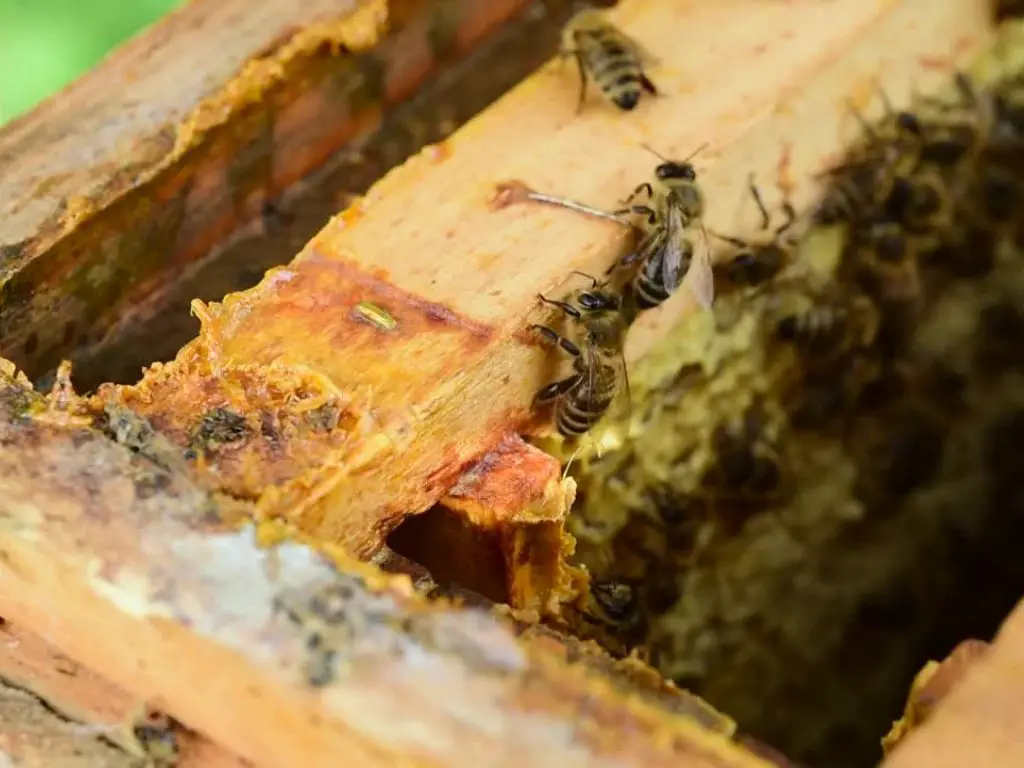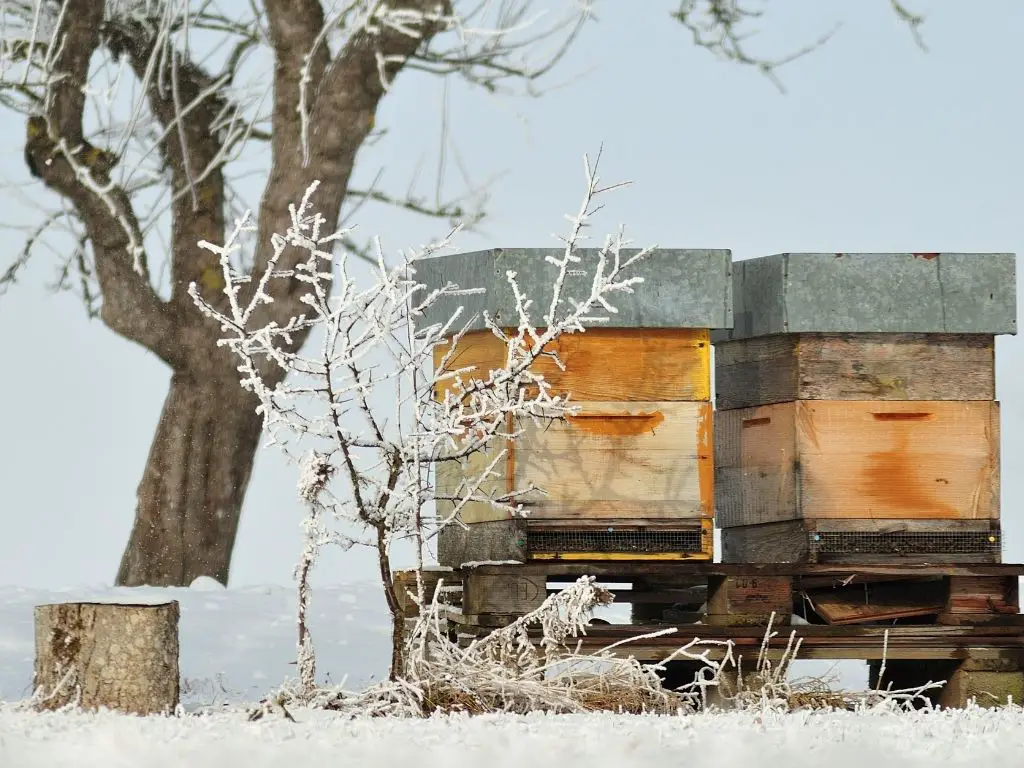The majority of honey bees kept by beekeepers are Apis mellifera. Within this species, there are different subspecies with different characteristics. There are also different breeds or stocks artificially selected by beekeepers to give desirable traits. In this article, I will show you how to choose the right honey bee breeds for your backyard.
What is the Best Honey Bee Stock for Novice Backyard Beekeepers?
The best honey bee stock for beginners is the Italian honey bees, for their ease of maintenance and moderate disease resistance. If a higher disease resistance is desired, choose either Buckfast and Russian honey bees. They are not as gentle as the Italians, though. Africanized honey bees are not for beginners.
There is no best honey bee stock. Each honey bee stock has its strength and weakness. Different beekeepers use different stock for different needs. For beginners, the key traits to look at are the gentleness and ease of handling. That makes Italian honey bees the best option.
A higher level of resistance to diseases also means less effort and complexity to deal with infected bees. In my opinion, this is also crucial to beginners.
Honey production is perhaps the least important trait for beginners. The priority for beginners is to learn, instead of getting as much honey as you can.
What is a Honey Bee Stock?

A honey bee stock is a group of bees displaying similar traits, as a result of artificial selections by breeding the same or different subspecies. The aim is to produce honey bees with desirable traits for beekeepers, so that maintenance is easier, while productivity, efficiency and profitability are maximized.
The production of honey bee stocks is mainly driven by the commercial players. A desirable honey bee stock allows them to produce the maximum amount of honey with the lowest possible costs.
As a backyard beekeeper who is not necessarily looking at profitability, a suitable honey bee stock means less time and effort spent on treating diseases and maintaining the hive, fewer complaints from the neighbors, and of course, more honey for yourself.
What are the Traits to Look for?
To make beekeeping enjoyable and successful, there are 7 key traits to look at. There is no bee stock that performs the best in all 7 areas. Instead, different stocks are suitable for different situations and needs.
Gentleness
Honey bees have a stinger. They will not hesitate to sting any nearby threats if provoked. If you keep bees in your backyard, you want the gentlest honey bees to reduce the risks that your neighbors may face.
Certain bee stocks are gentler than others. For instance, the Italian honey bees, Carnolian honey bees and Caucasian honey bees. These 3 stocks should be your first option, if gentleness is your concern.
Do note that no matter how gentle a bee stock is, they do sting if they need to.
Disease Tolerance
Honey bees are prone to a handful of diseases, as outlined in this guide. Some diseases can be treated with medication, while others cannot. The best way to prevent those diseases is by using a disease tolerant bee stock in the first place.
Different geographical regions may have different honey bee diseases, which are more prevalent than others. Depending on your location, you want to choose a stock resistant to the most prevalent diseases. For instance, Australian beekeepers should not be worried about varroosis or acarapiosis.
In general, the Carniolan, Buckfast, Russian and Africanized honey bees are the most disease-tolerant stock to get.
Honey Production
The biggest reward from beekeeping is the sweet and natural honey! Certain honey bee stocks, such as the Italian and Buckfast, produce more honey than the other bee stocks. If you are considering earning some side income from beekeeping, you should consider the bee stocks with a higher yield.
Swarm Handling
Honey bees propagate by swarming, where the queen leaves the hive to look for a better place to stay, bringing along half of the bees and honey. This leaves your hive with a new and weak (at least temporarily) queen, or worse, no queen.
As a result, your hive may collapse, or be unable to gather enough honey to survive the winter. And of course, you will not have any honey to harvest for yourself.
Certain bee stocks are more likely to swarm (eg. the Carniolan), while others are less likely to swarm (eg. Buckfast and Caucasian).
Propolis/Wax Handling

Honey bees produce sticky propolis and wax. If you don’t scrape them off on time, all the frames in your hive will be glued together. Certain bee stocks, such as the Caucasian, produce a lot more propolis and wax. This means you need to spend more time clearing them during your routine inspection.
Overwinter Ability

If you live in a region with very cold winters, you need a bee stock that can overwinter well.
During the cold winter, your bees cannot forage. They have to rely on their stored honey to survive the winter.
Certain bee stocks, such as the Russian honey bees, overwinter well. During the winter, the Russian bees restrict their brood production to maintain a small colony, ensuring sufficient food for the colony to survive the winter.
This trait is least relevant for those who stay in the warmer part of the world.
Spring Buildup
After the cold winter, honey bees need to quickly build up their population in the spring. This will provide enough workforce for the colony to collect enough honey, so that they can have honey surplus for you to harvest.
Generally, you want a bee stock with a fast spring buildup.
Commonly Available Honey Bee Stocks for Backyard Beekeepers
Italian Honey Bees
Italian honey bees are a subspecies of honey bee called Apis mellifera ligustica. They are known for their gentleness, which makes them ideal for backyard beekeepers. Other than that, they produce a lot of honey with little propolis and wax.
Italian bees maintain a big population during the winter. You can support them by giving them extra food before the winter. Once the spring is here, the population booms.
Carniolan Honey Bees
Carniolan honey bees, also known as Apis mellifera carnica, are a gentle subspecies. They can quickly adjust their brood production in response to food availability, allowing them to overwinter well and grow their population fast enough in spring.
On top of that, Carniolan honey bees have an overall good resistance towards several diseases, especially tracheal mite infection.
However, Carniolan honey bees are prone to swarming. This can be prevented by following the best practices for beekeeping.
Buckfast Honey Bees
The Buckfast honey bees are hybrids from unknown subspecies. They are known for high productivity and ease of maintenance. They are also tolerant to common diseases, such as nosema and tracheal mite infection.
There are 2 things to note though. First, Buckfast honey bees tend to rob other hives, bringing back with them parasites such as varroa mites. Second, they have a higher tendency to abandon their hive, leaving nothing behind.
Russian Honey Bees
Russian honey bees are the best honey bee hybrid to keep, if your major concerns are disease tolerance and overwinter capability.
Out of the common honey bee stocks, the Russian honey bees have the highest tolerance to both varroa mites and tracheal mites. Of course, this is irrelevant if you stay in a region that has no varroa mite or tracheal mite issues.
German Honey Bees
The German honey bees, Apis mellifera mellifera, have an exceptional overwintering ability. However, it lost out to the Buckfast, Italian and Russian honey bees in many aspects. If you have an option, try not to keep German honey bees.
Caucasian Honey Bees
The Caucasian honey bee is scientifically known as Apis mellifera caucasia. They are very gentle in nature, making them a good option for backyard beekeepers.
However, the other honey bee stocks are proven more superior than the Caucasian honey bees in terms of maintenance, productivity, overwinter ability and disease tolerance. There is no reason to use the Caucasian honey bee stock if you have a choice.
Africanized Honey Bees
In 1956, Apis mellifera scutellata was introduced into Brazil in experiments to improve honey yield. Some of them escaped to the wild, and cross breed with the bee populations out there.
This produced the Africanized honey bee. Due to their superior traits, Africanized honey bees have slowly expanded their distribution in North and South America.
Africanized bees are also known as the killer bees. They are generally more defensive than other subspecies of honey bees, where they easily get provoked and attacked in larger numbers.
Stings from Africanized bees are not more toxic nor painful than other bees. What makes them notorious is they attack in greater numbers, which can cause death. For instance, if provoking a European bee colony earns you 100 stings, expect 1000 stings from Africanized bees.
Novice backyard beekeepers should not consider keeping Africanized honey bees for the obvious reasons. Having said that, Africanized honey bees are far more superior in terms of honey production and disease tolerance compared with other honey bee stocks. They are reared by commercial beekeepers because of that.
Honey Bee Stocks Comparison Table
Here’s a table depicting side-by-side comparisons of different traits in all the 7 honey bee stocks. It should give you an idea which one to choose for your backyard.

Other Notable Honey Bee Stocks
Aside from the 7 famous honey bee stocks, there are many other noteworthy stocks available for beekeepers. Examples include:
Starline – A hybrid Italian stock specialized in pollinating clovers.
Midnight – A hybrid Caucasian and Carniolan stock with a high level of gentleness and ease of handling.
Cordovan – A subset of Italian honey bees with attractive light yellow color
Minnesota Hygienic Italian – A stock displaying a high degree of hygienic behavior, making them resistant towards diseases such as foulbrood diseases and varroa mites.


